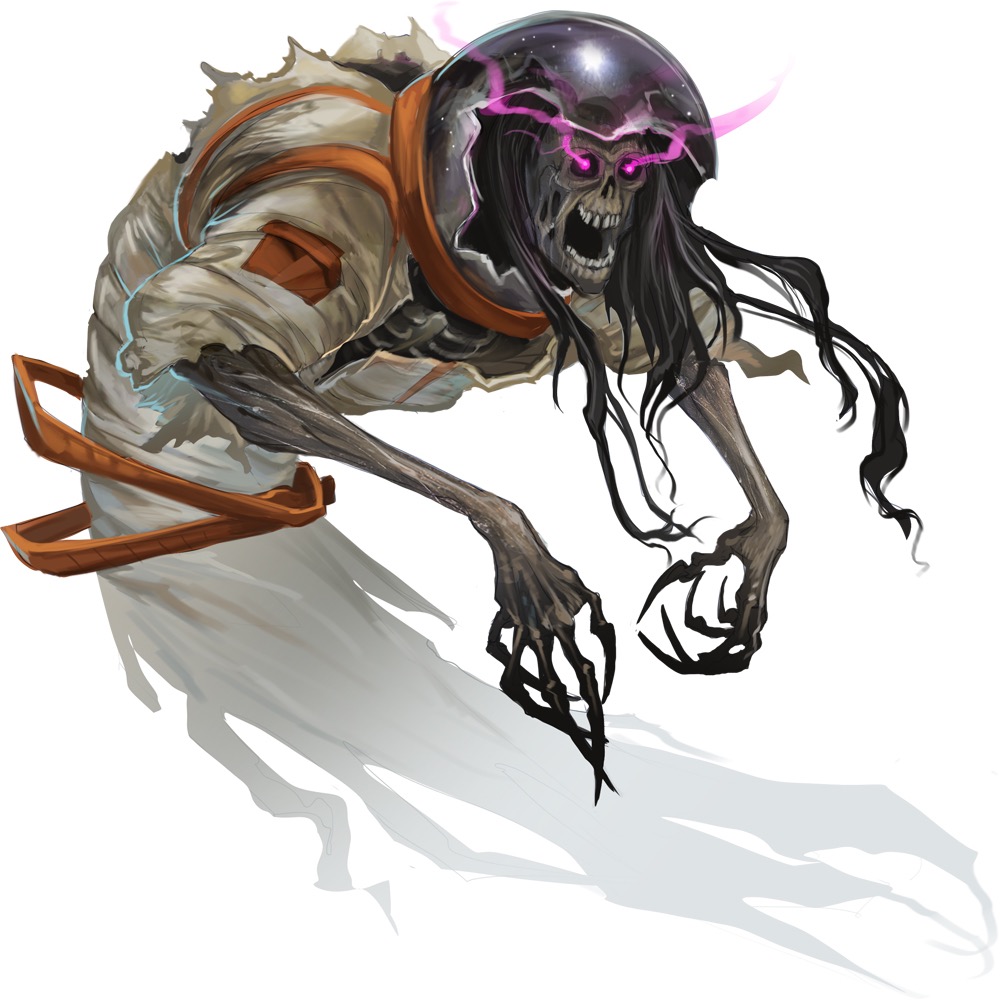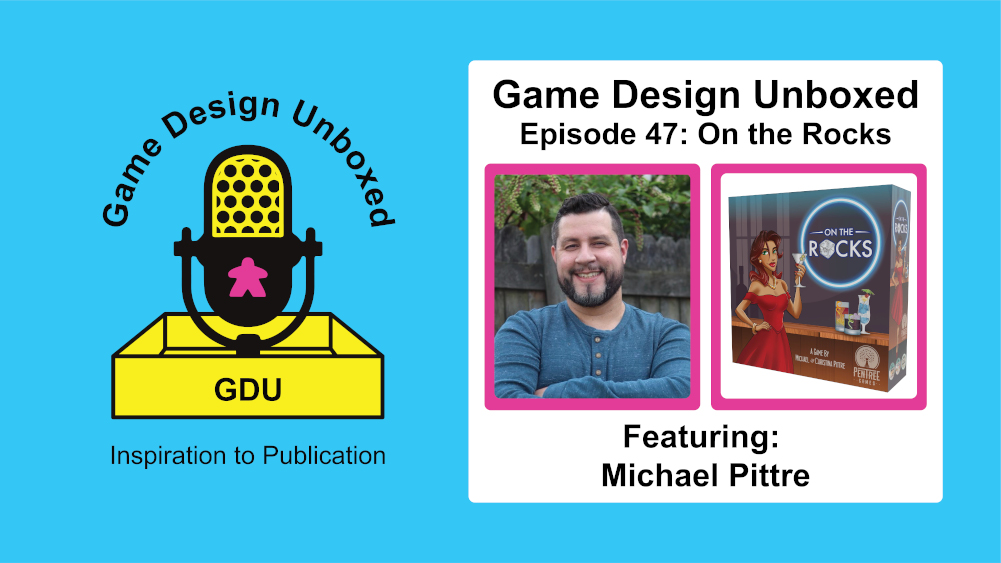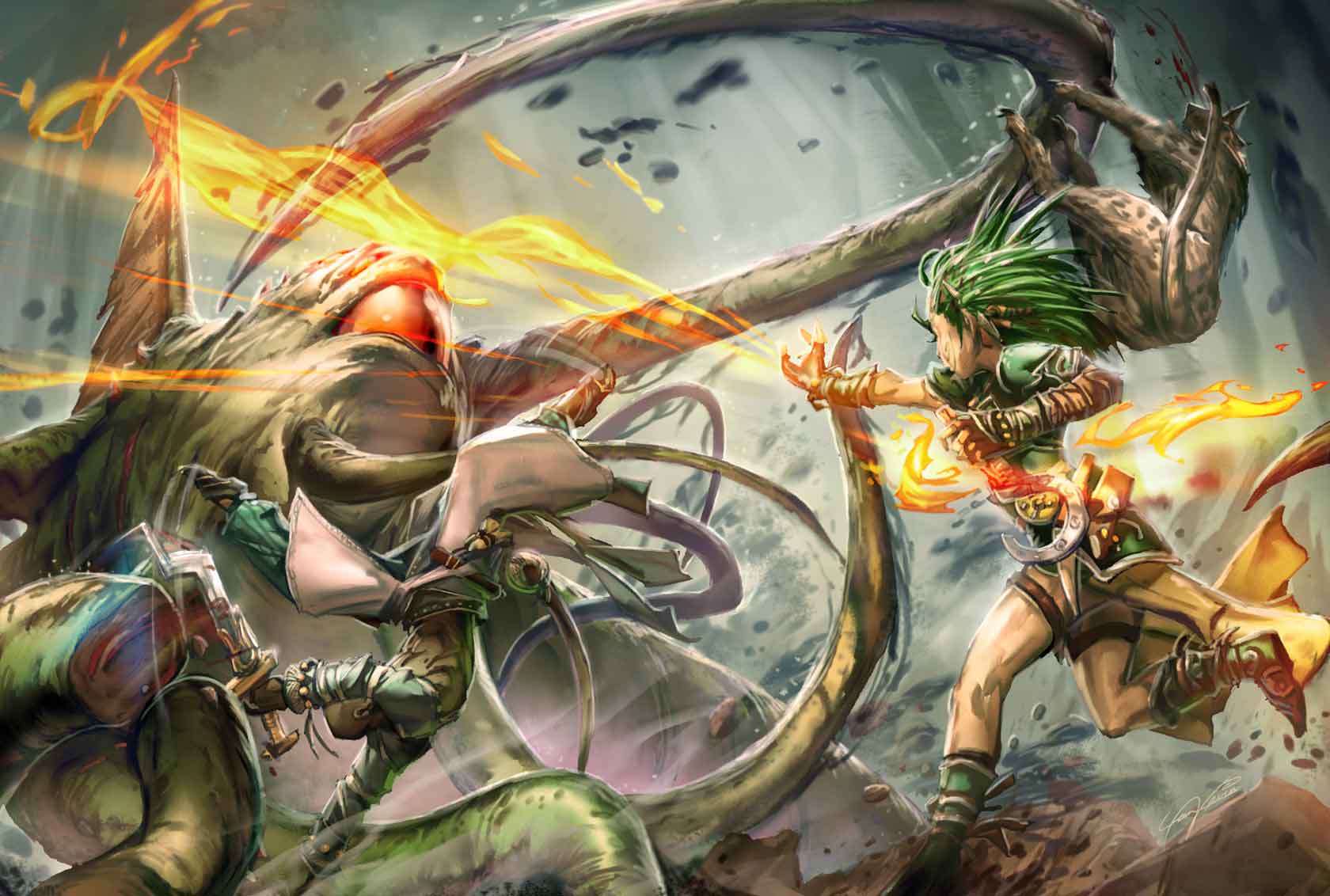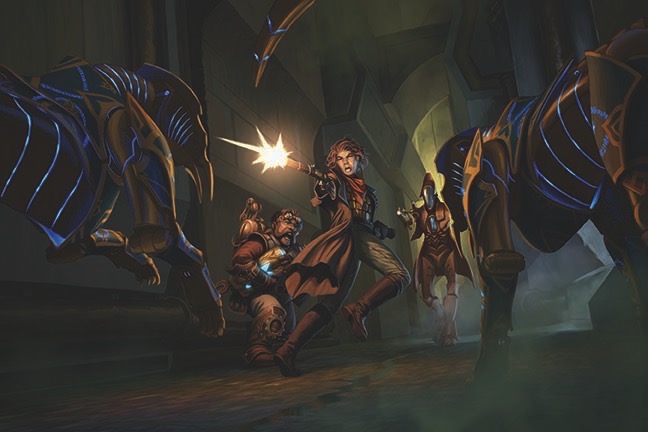Long time readers will know that I’ve picked up the habit of dropping hints at the end of each blog about the next entry’s topic, and it’s something that’s been going on for over half a year. And I’m about to break that most sacred of vague promises. Why? Because I saw Cyberpunk: Edgerunners and it absolutely blew me away. The animation, the soundtrack, those feels, and oh sweet Triune that action. Studio Trigger was absolutely firing on all cylinders here. Do yourself a favor and look up the trailer, and if you like what you see, go check it out. It’s amazing.
Anyway, where was I?
Hello and welcome to Eldritch Excursion, the blog that’ll kit your body out with the sickest cutting-edge mechanics this side of the Pact Worlds and send your brain halfway to cyber psychosis with all the flavor it’s packing. Today I’ll be reexamining the augmentation options for Starfinder and asking a single question: after replacing so much of your body with top shelf tech, how much if you is still in there?
Optional Rule: Ego Rot
Cyber sickness. Chitter. Chasing the pale horse. Fae-mind. The phenomena of goes by many names and comes in many forms, but it is most commonly referred to as ego rot. Ego rot is a broad term used to describe a degradation in the sense of self caused by overuse of augmentations. As each kind of augmentation interfaces with the body in its own way, each type of ego rot can come with different symptoms, thresholds for triggering, and means of treatment. The issue is further complicated when considering each individual having different reactions, the general availability of augmentations, and the massively influential industries with a vested interest in their success.
Each broad category of augmentations has its own rules for how much an individual can handle without any complications. When taken beyond that limit, the augmentations begin to influence their user’s biology and psychology in ways that are usually detrimental and only intensify as the user upgrades with even more augments. Despite the insistence of several advertisement campaigns and medical experts on corporate payrolls, personal upgrades very much count for meeting such thresholds.
Some individuals possess extraordinary tolerance for modifications and are able to surpass these limits. Whether from a lucky roll of the genetic dice or access to well-protected surgical and engineering techniques, these fortunate few can withstand modifications that would destroy lesser bodies. Any bonus augmentations gained through features such as the geneturge mystic’s personal modification or augmentations slotted into bonus slots from sources such as the augmented archetype do not count against these limits.
An even rarer few are born with a seemingly limitless tolerance for augmentations that defies conventional study, though their biology has its own unique quirks to deal with. Some of these ‘evolutionists’ see themselves as the future of sentient life, while others see them as monsters wearing humanoid skin. Evolutionists do not suffer ego decay from augmentations tied to their niche.
A note for GMs: These rules set out to penalize excessive augmentation use. As a result, there should be more augmentations available in order to incentivize their use. Consider decreasing prices by about 10 to 20 percent (stacking with theme discounts) depending on what’s most popular where the PCs are shopping.
Cybernetics
Cybernetics represent the most iconic form of augmentation in the Pact Worlds and beyond, and no one is quicker to point that out than the leading brand names in cyberware. Everyone from the top names on Verces to back alley ‘choppers’ offer a wide variety of ways to replace the soft and vulnerable flesh with durable steel. Most sellers and operators worth the credits will insist that cybernetic augmentations are perfectly secure from electronic interference, but that’s not entirely true. While minimal augmentation results in minimal danger, the perpetual game of leapfrog between hackers and cybersecurity means there’s always a risk.
Adding even a single cybernetic augment to a living body causes the recipient to gain the bionic subtype. Abilities, items, and spells that detect or identify constructs reveal cybernetic augments (identifying only the augmentations as constructs, rather than the recipient creature as a whole).
Creatures with this subtype are also damaged by spells that damage constructs and can be subject to construct-specific effects. If a spell or ability that does something other than deal damage would not normally affect such a creature but does affect constructs, it can affect a creature with the bionic subtype, but that creature gains a bonus to AC and saving throws against the effect equal to 4 – the number of cybernetic augmentations it has (to a minimum bonus of +0). Once a creature reduces this bonus to +0, the cybernetics begin to overtake the body. If such a creature is affected by an ability, item, or spell that would heal Hit Points or Stamina to living creatures only, reduce that healing by a number equal to twice the creature’s cybernetic modifications.
Biotech
Biotech augmentations represent a more visceral approach to body modification. Many die-hard fans of biotech praise it as being a more natural approach, while others feel a deeper sense of connection with a mod that was alive even before it became a part of them. These statements hold water for most light users, but frequent augmentation can wreak havoc on someone’s biology all the same. While a healthy body can adapt to several augmentations, often mutating minor cosmetic features that match the ‘donor’ species, overindulging can lead to a wildly mutagenic and seemingly mercurial body and a half-feral mind swimming in a multi-species cocktail of barely-compatible chemicals. Ego rot caused by biotech is often nicknamed after bestial sounds with names such as The Howling or Chitter, inspired by the sounds its victims often make.
Adding even a single biotech augmentation to a living body causes the recipient to gain the biomorph subtype.
A creature with the biomorph subtype can easily sustain a number of biotech augmentations equal to their Constitution modifier. Additional augmentations tax the recipient’s mind and push them towards a sort of half-feral state. The creature suffers a penalty to all Charisma-based checks that don’t make direct use of their augmentations (such as bearing biotech fangs as part of Intimidate or displaying bioluminescent feathers as part of a Profession check) equal to the number of biotech augmentations above their limit.
Magitech
Magitech combines the complexities of cybernetics and magic, often requiring an escoteric skillset to create and install. The comparative rareness of these kinds of augmentations mix well with the commonality of traditional magic to create a perception of stability and reliability that other forms of modifications lack. Add the fact that most recipients, even the heavy users, tend to have less threatening manifestations and you have the perfect storm of marketing potential. As such, magitech is often seen as a more ‘noble’ kind of augmentation, with many clients numbering amongst figures who want an air of eldritch power or spiritual leaders who desire ostentation. Of course, like all augmentations, these have their downsides. As the augmentations connect the mind to the essence of the supernatural, excessive use erodes the user’s sense of reality. The overburdened brain begins to de-synchronize with the material plan and visions from alternate timelines or layers of the ethereal mingle to create fleeting visions and audiovisual nonsense. Out of all forms of ego rot, abusers of magitech are by far the most likely to have cults form around them.
Adding even a single biotech augmentation to a living body causes the recipient to gain the runebound subtype.
A creature with the runebound subtype can easily sustain a number of magitech augmentations equal to their Wisdom modifier. As a fundamental understanding of magic lends itself well to bearing the burden of magitech, a creature capable of casting spells may instead use the ability score tied to their spellcasting DCs. Additional augmentations blur the line between mundane reality and sensory overload from planar energies normally invisible to the naked eye. The creature suffers a penalty to all Perception checks, Sense Motive checks, and checks to Recall Knowledge that do not revolve directly around magical phenomena equal to the number of magitech augmentations above their limit.
Necrografts
Necrografts have an interesting public perception around the Pact Worlds. The inherent downsides of using too many are more commonly known, which leads to fewer people taking the initial plunge, but it means those that do are usually more aware of exactly what they’re getting into. Sentient undead have the least to lose from being the recipient of necrografts and make up their primary customer base, though some body mod fanatics and mortals that have a morbid fascination with death are also common among their users. It is this smaller, more concentrated community that has lead to groups of ‘grave dodgers’ that form closer bonds with one another. Some of these groups delve deeper into the scene, augmenting their bodies until they’re indistinguishable from the actual walking dead.
Some innovative grave dodgers have created specially crafted personal upgrades based on necrografts. These use on a variety of methods, ranging from injections of extremely potent ectoplasm to seances with expensive offerings to coax willing spirits into their bodies.
Similar to the bionic subtype, creatures with necrograft subtype who reduce their bonus against undead-specific spells and effects to +0 begin to undergo additional transformations as undeath seeps into the rest of their body. Their dietary needs shift to a more carnivorous palette. Work with the GM to determine the specifics, but it should always require a creature that was once alive. As the creature gains additional necrografts (starting at 4 and increasing to 8) these needs should become more specific, requiring fresher nourishment and prey closer to the creature’s own species. What begins as buying from the local butcher may ultimately end with craving the still-warm flesh of their slain kin, for example.
And that’s what I’ve got for that. Do you like it? Does it make you want to add a twist of introspective philosophy and a pinch of psychological horror to your game? You think about that, and I’ll go work on my next Starfinder character. I’m thinking gnome soldier for this one. Come back next time when I actually do that thing that I said I’d do last time. It’s probably going to read like a mix of this article and another one that I wrote not too long ago.








